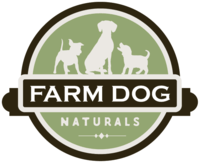We pay a lot of attention to dog poop.
That might sound weird, but it’s true. You can tell a great deal about your dog’s health by taking a quick peek at her poop.
Do you know what to look for? Or what it means when poop doesn’t look like typical, well, poop?
Give this guide a read through to know what to be watching for when it comes to bathroom behaviors, and when a call to you vet might be in order.
A Guide to Dog Poop
If you’ve ever brought your dog into your vet when she’s not feeling her best, you may remember them asking you about the 4 Cs of dog poop: color, contents, consistency, and coating.
- Color: healthy poop should be a nice chocolate brown color. If the color is off, you want to know what (and we’ve covered that below).
- Contents: look out for anything extremely out of the ordinary. If you find something that has you worried, call your vet.
- Consistency: a nice firm, but not rock solid, poop is what you want to see. Your dog’s poop shouldn’t be so hard that it comes out as pellets, and it shouldn’t be so soft that you can’t pick it up easily.
- Coating: dog poop shouldn’t have any sort of coating – no mucus or a significant amount of blood. If you notice either, call your vet.
A Poop Color Guide
As mentioned, when all is right with the world, your dog’s poop will be a nice chocolate brown color.
However, if it isn’t, you need to know why. When it does to the rainbow of poop colors, these are the most common issues:
1. Green
Green poop could mean a few different things. The most common culprit is that your dog’s just been eating a little too much grass, or it could be the leafy greens she had for dinner. In either of these cases, cut back on the spinach and don’t worry too much.
That said, green dog poop could be a sign of something a bit more serious. If your dog’s poop is green, and you notice any other signs that your pup isn’t acting 100% normal, it could be caused by rat-bait poisoning, a parasite, or some other internal issue. Check in with your vet.
2. Black
If your dog’s poop is really dark, almost tarry black, or even sometimes dark maroon, this could mean digested blood somewhere high up in the intestinal tract. This could be a sign of a gastrointestinal issue, such as a bleeding ulcer. If you notice this, it’s best to get to the vet.
3. White Spots
Regular brown poop, but with the addition of small white flecks, usually means worms… They may look like tiny grains of rice, or long strand of spaghetti. Don’t panic. Bag a sample and take it into the vet for further examination.
4. Blue/Green
If you’re seeing blue or green poop, this could be an indication that your pup ingested something poisonous. It might also be a sign of indigestion, but just in case, call the vet to be sure. They might recommend bringing in a sample, just to be safe.
5. Red Streaks
Chocolate brown poop with red streaks is a sign that your dog is bleeding somewhere along their large intestine. That means it’s farther down the intestinal tract than black, tarry poop. Normally this shouldn’t warrant an emergency, but pay close attention to your dog’s next poops and watch for any changes in behavior. Possible causes of the blood could be an anal gland infection, rectal injury, or an inflamed colon.
6. Orange/Yellow
Orange is a tough one. On the one hand, it could be caused by a lot of orange food (think pumpkin) in the diet. However, if you haven’t fed anything orange recently, it could be a sign of biliary disease. This is any illness or disease process associated with your dog’s gallbladder and surrounding structures, such as the bile duct. In this case, it’s best to reach out to your vet, especially if you notice the poop is runny as well.
Yellow dog poop color can indicate a variety of things. It can mean a simple stomach upset, so just keep an eye and watch if it passes. If it doesn’t, it might mean something your dog ate is not agreeing with her, so think back at any new additions and perhaps avoid them in the future.
7. Grey and Greasy
Grey dog poop color that’s also possibly greasy means your dog may be suffering from some form a maldigestion. Your vet might run tests for exocrine pancreatic insufficiency or EPI, which basically means your dog’s pancreas isn’t functioning properly.
**If it’s more white than grey, this might mean there’s too much calcium or bone in the diet. If you’re a raw feeder, you might notice more dry, white poop after a bone day. It should normalize, but if it doesn’t, check with your vet.
8. Purple/Pink
This one is not good. If you ever notice pink or purple poop, seek emergency medical attention ASAP. If your dog’s poop looks anything like raspberry jam, it could be hemorrhagic gastroenteritis. This is a disease that may be caused by abnormal responses to bacteria or bacterial endotoxin, or a hypersensitivity to food. It is fatal if not treated fast enough. Get to the vet right away.
Notice something off with dog poop? Keep this guide handy for a quick check, and then you’ll know what to do next! Have fun 😉

